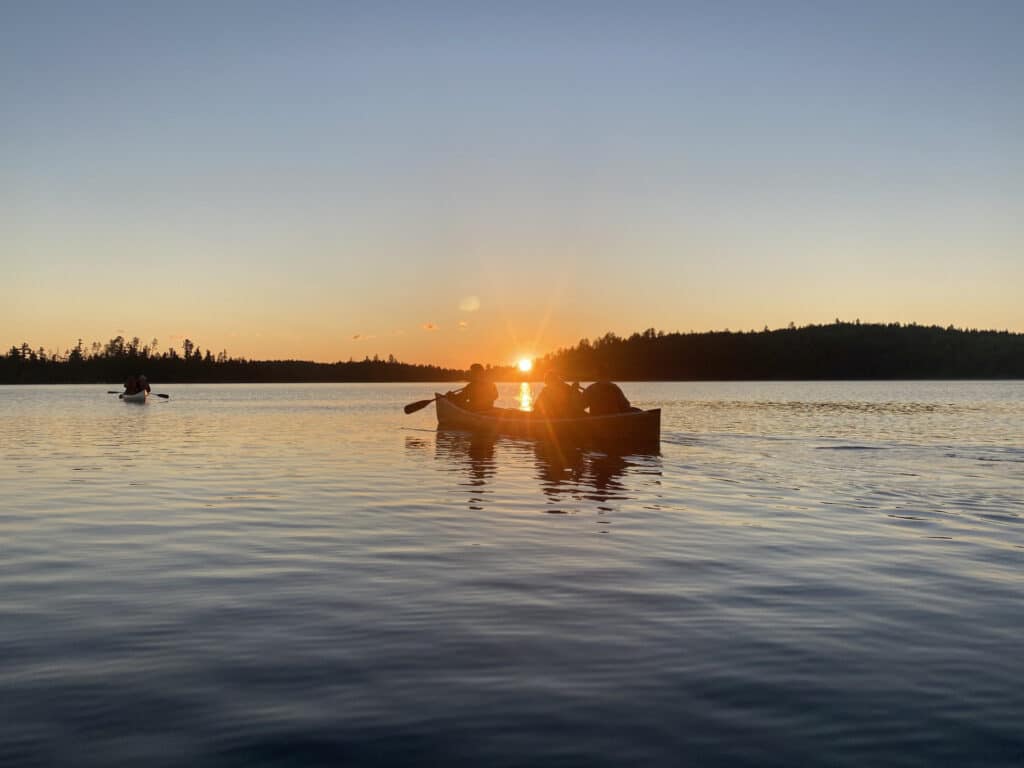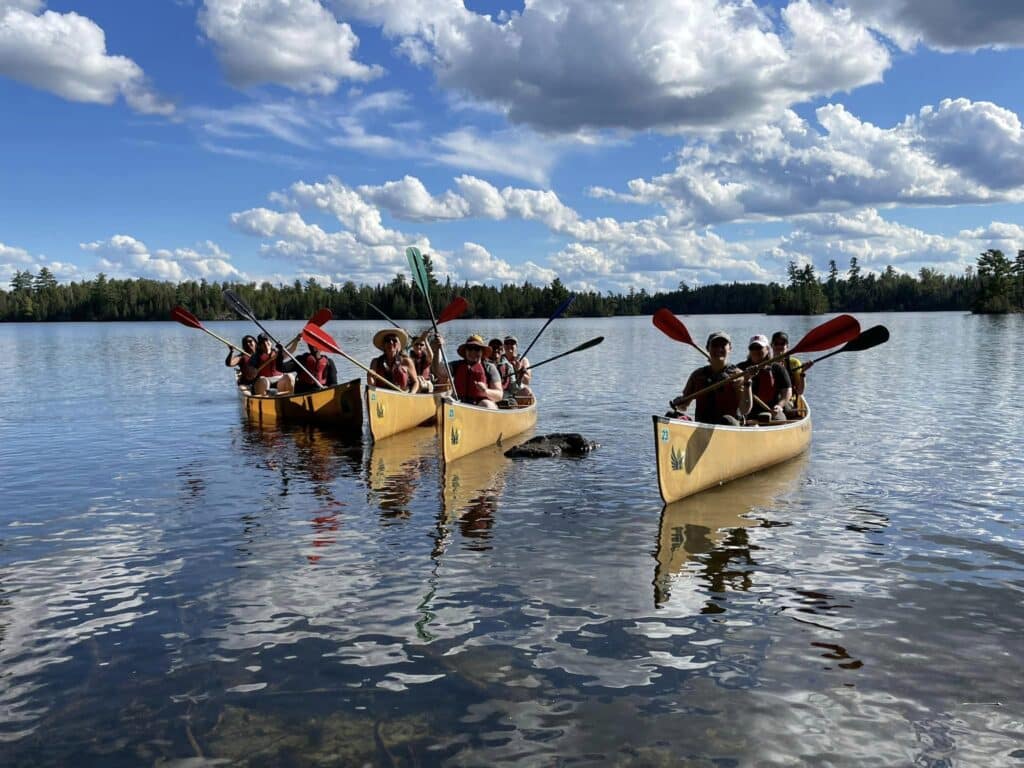
A Boy Scout program at the edge of the Boundary Waters Canoe Area Wilderness is marking 100 years of operation this summer. What is now called the Charles L. Sommers Wilderness Canoe Base got its start in 1923, and has continued sending young people into the wilderness ever since. It has been located on Moose Lake since 1942.
The program has changed significantly over the past century, but the fundamentals remain the same. Sommers Canoe Base typically sends 4,000 to 6,000 young people and their adult chaperones into the wilderness each year. Groups come from all over the United States. They take trips ranging generally from six to 14 days in length, learning outdoor skills, leadership, and more.
“Canoe camping treks are our bread and butter here at Northern Tier,” the Boy Scouts say. “With the thick Boreal Forest making trails difficult to navigate and maintain, canoes are the preferred mode of transportation in the Northern Forest. Northern Tier equips each crew with the necessary outfitting needed and a private interpreter to ensure their trip is a success.”
In a recent Duluth News Tribune article, camp director Blake Feree explained how the interpreter supports the group but does not dictate its decisions.
“Each group has a designated leader, one of the youth who eventually becomes the decider of where to travel, where to camp and when to break camp or have a meal. At some point, the interpreter ‘works himself out of a job,’ as the youth leader takes over the group dynamic and decision making and as the campers take up daily chores.”

Typical groups comprise six scouts, two chaperones, and a guide called an “interpreter” from the canoe base. Sommers is now the linchpin in the Boy Scouts of America’s Northern Tier High Adventure program, which also includes camps in Atikokan, Ontario and Bissett, Manitoba. The string of outposts provide access to the canoe county of Minnesota and Canada. There are three other High Adventure programs around the country; Northern Tier is the oldest.
“It’s incredible to see a group of six boys come back to the base dirty, covered head to toe in mosquito bites and smiling and talking about all the amazing things they learned,” Leslie Thibodeaux, program director, told Wilderness News in 2012. “They’re whole different people.”
Program director Thibodeaux told the Duluth News Tribune that recently, the camp has been having more trouble hiring guides, as in many places and industries.
“We really could use more staff just to give our people a few more breaks during the summer,” she said. There were more than 200 staff before the COVID-19 pandemic, but hiring has been a struggle ever since.
To celebrate its centennial, the camp has been offering special routes that commemorate early canoe trips taken by camp participants, and offering the “Paul Bunyan Award” to groups that complete the trips or any 100-plus mile trek.
More information:
- Northern Tier High Adventure Program – Boy Scouts of America
- Ely camp marks century of sending Scouts into Boundary Waters – Duluth News Tribune
- Northern Tier High Adventure Program – Wilderness News
- Charles L. Sommers Alumni Association

